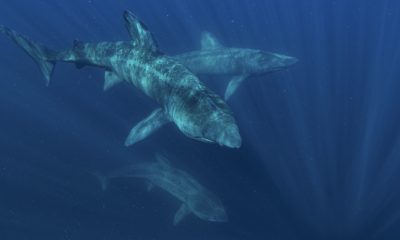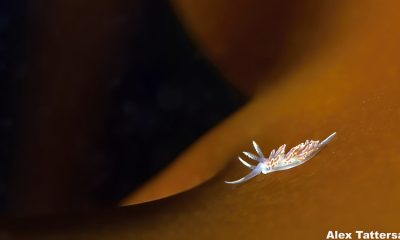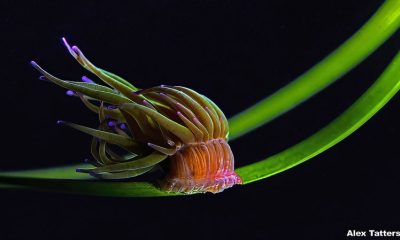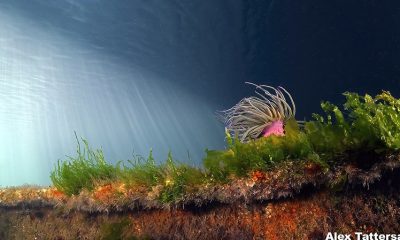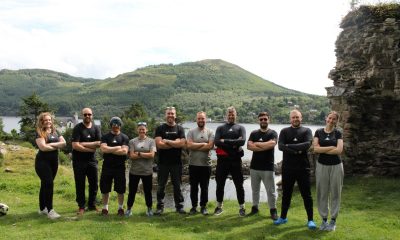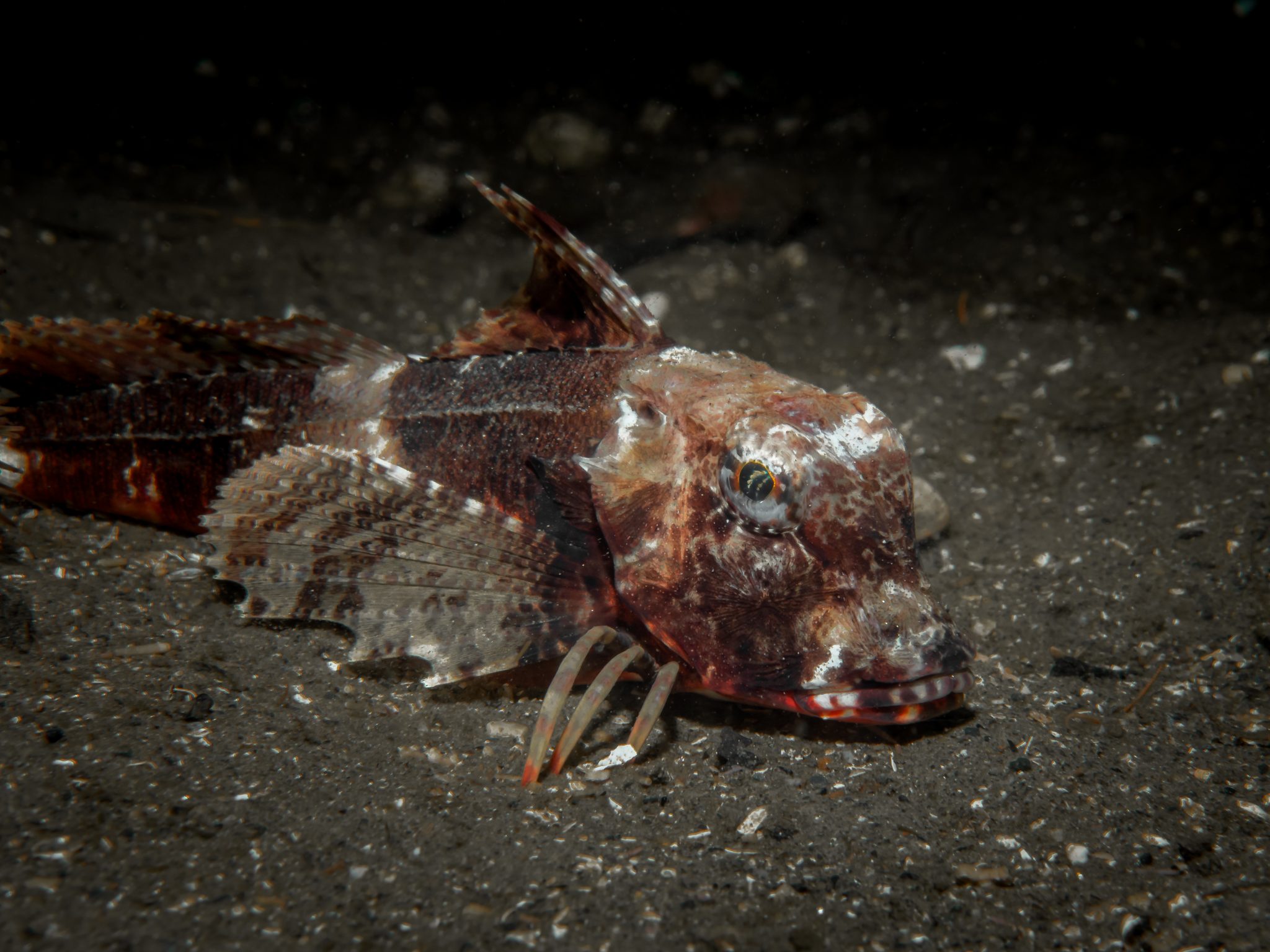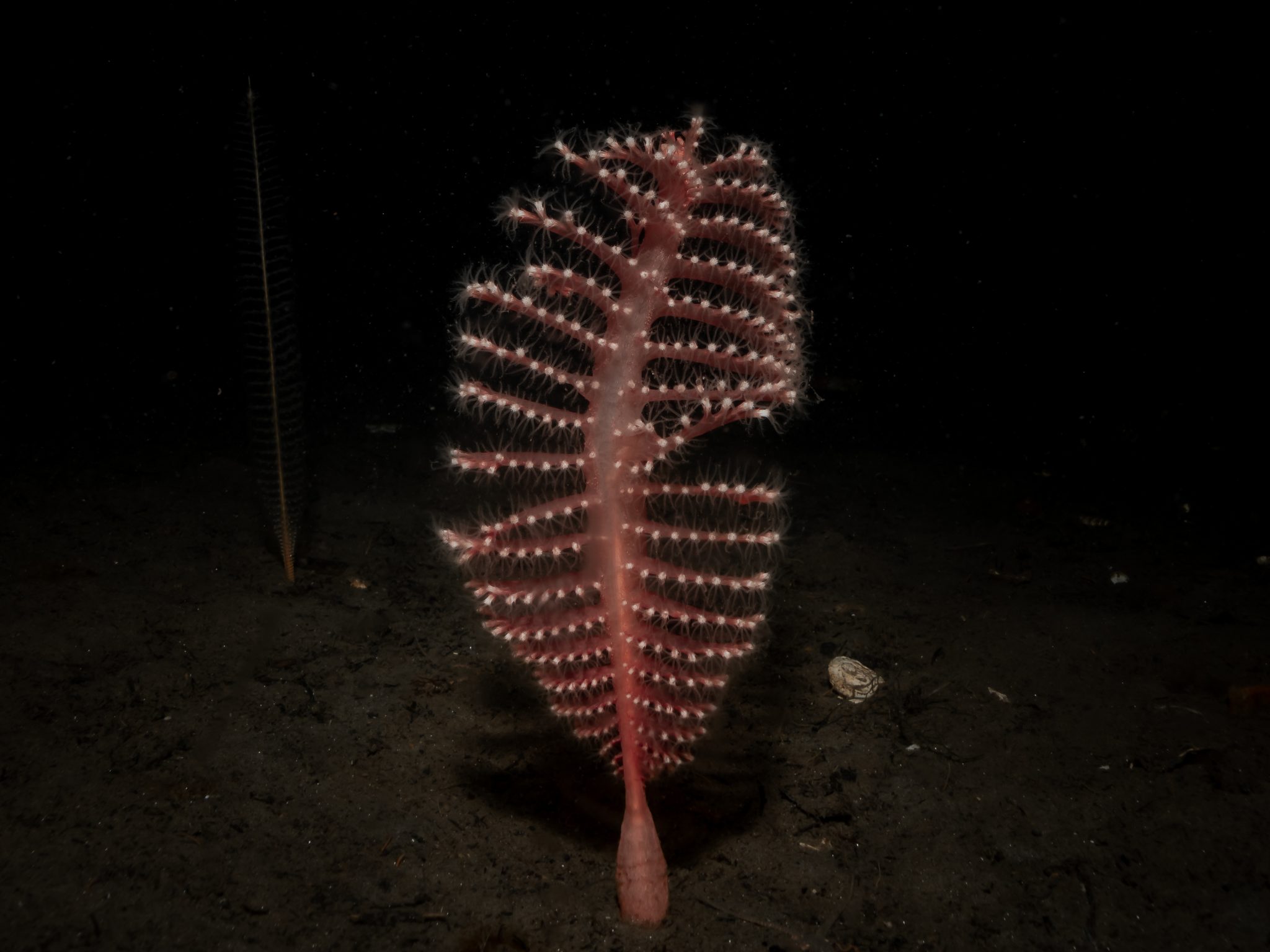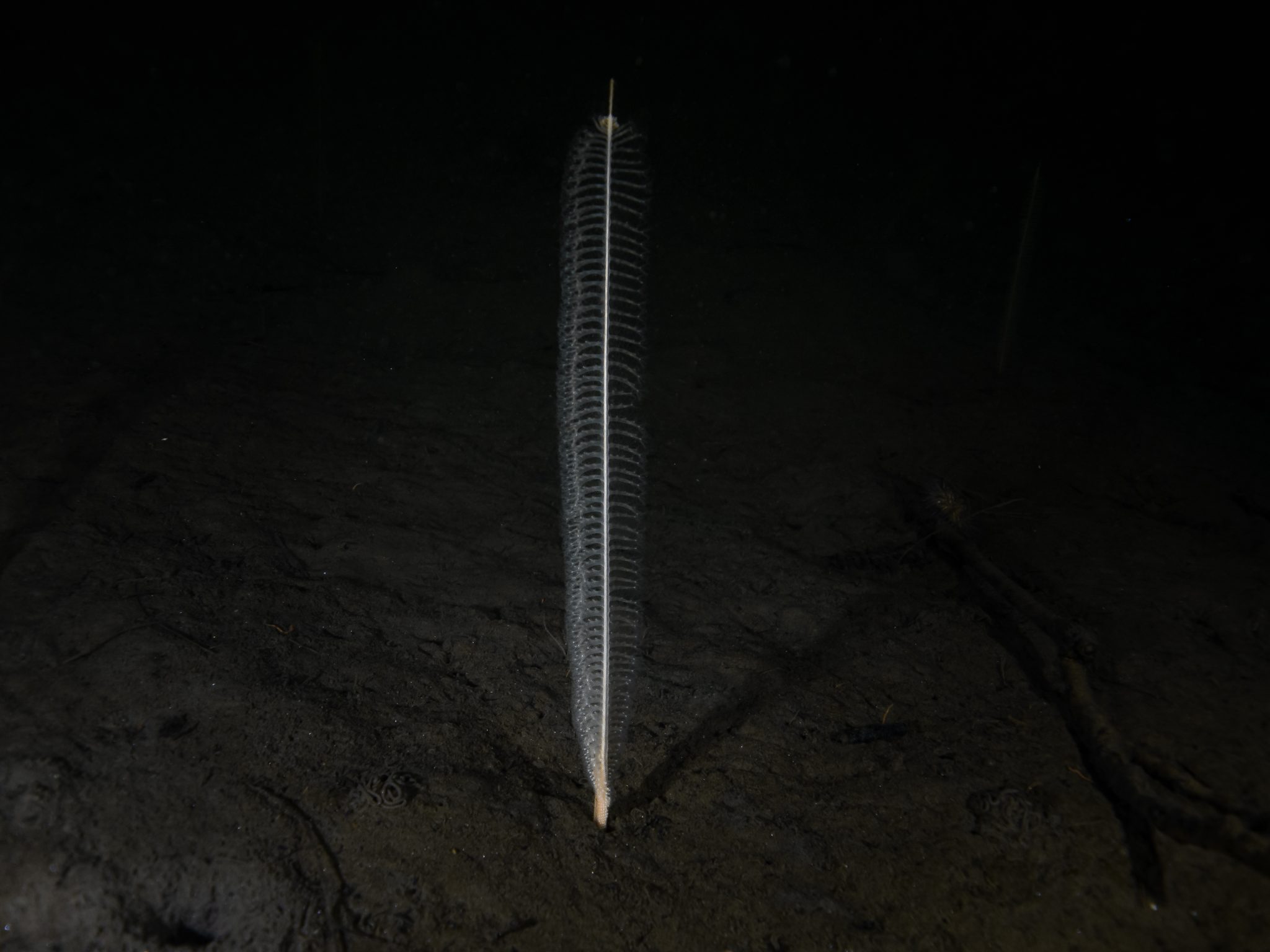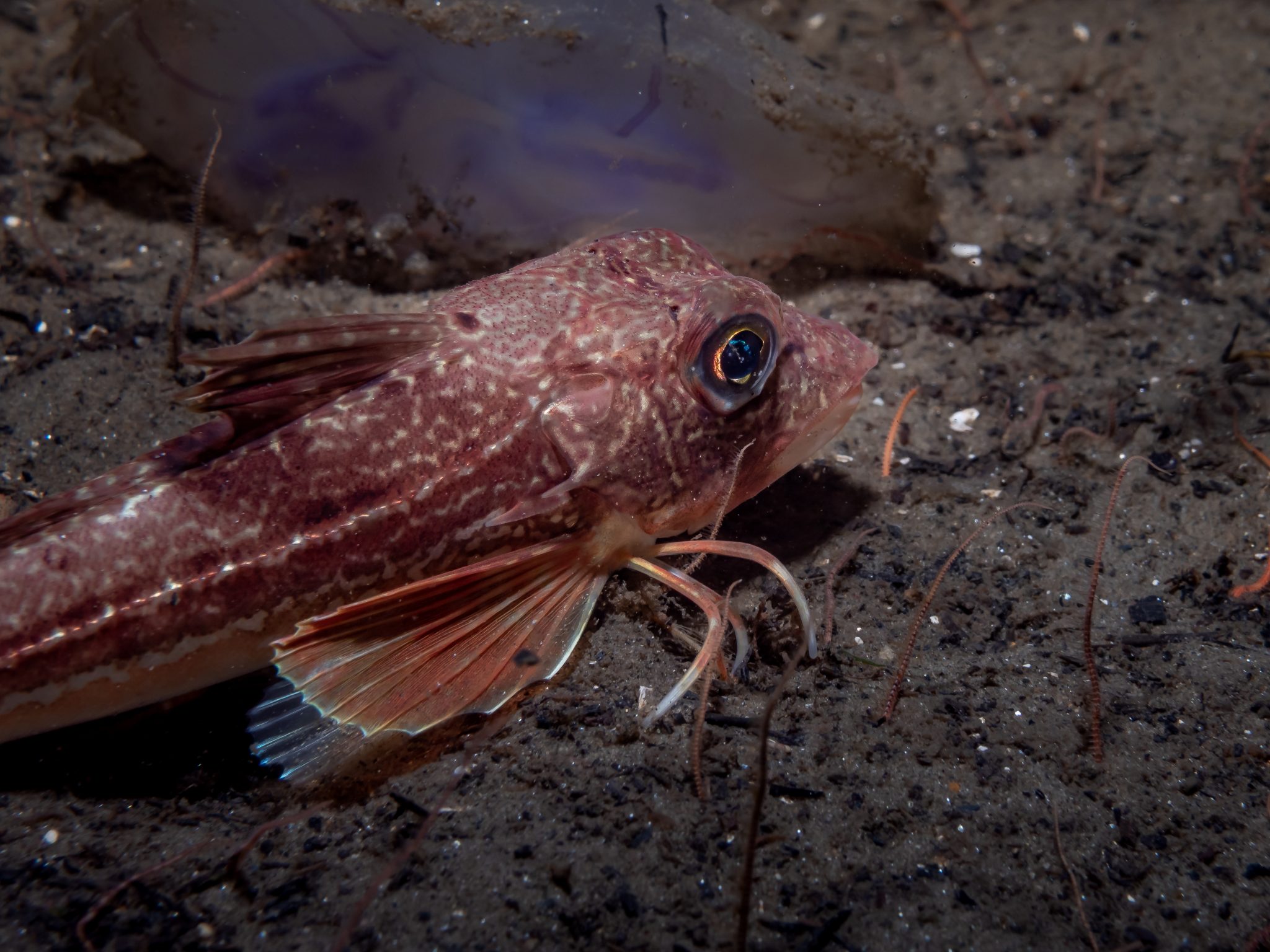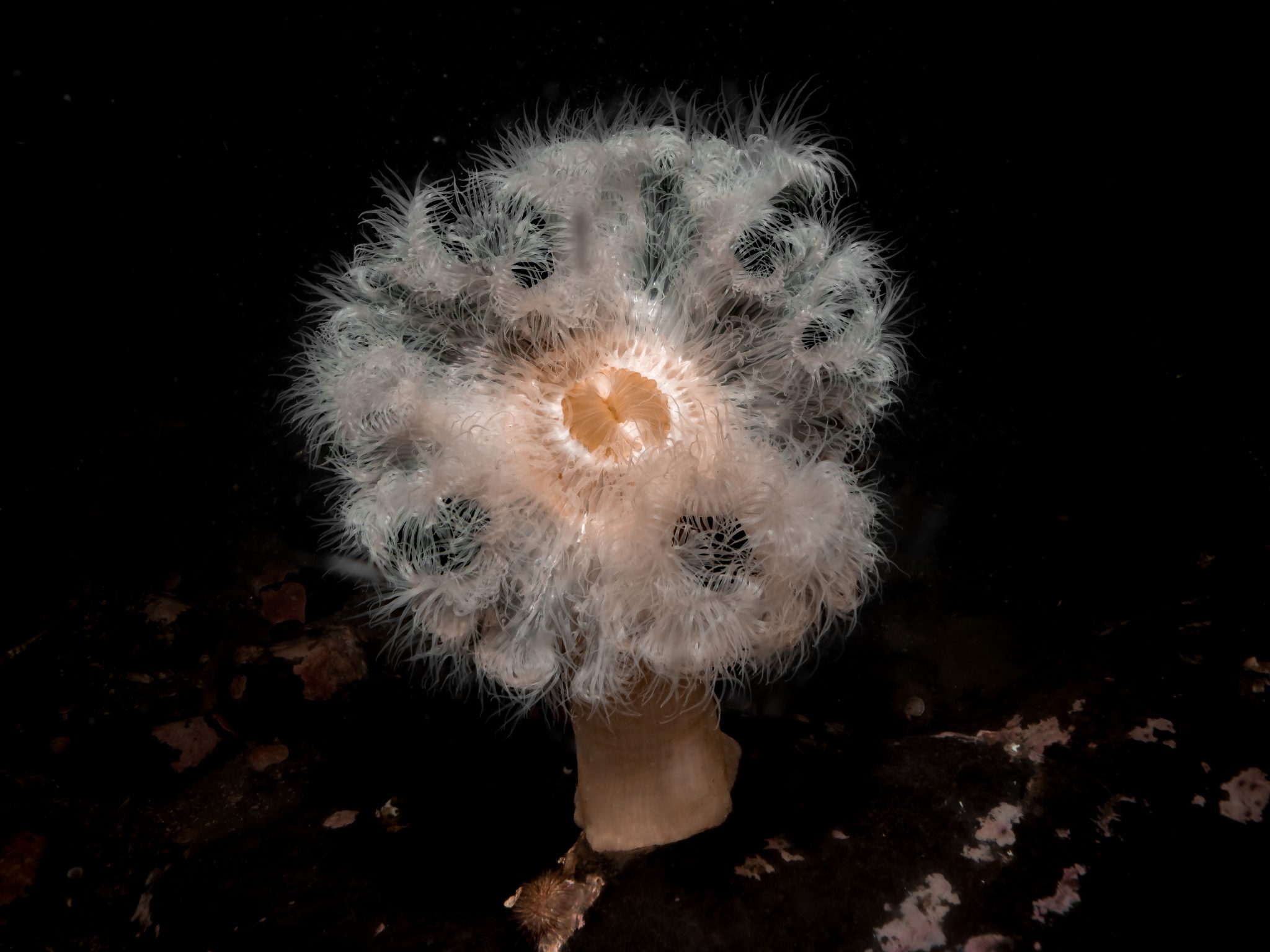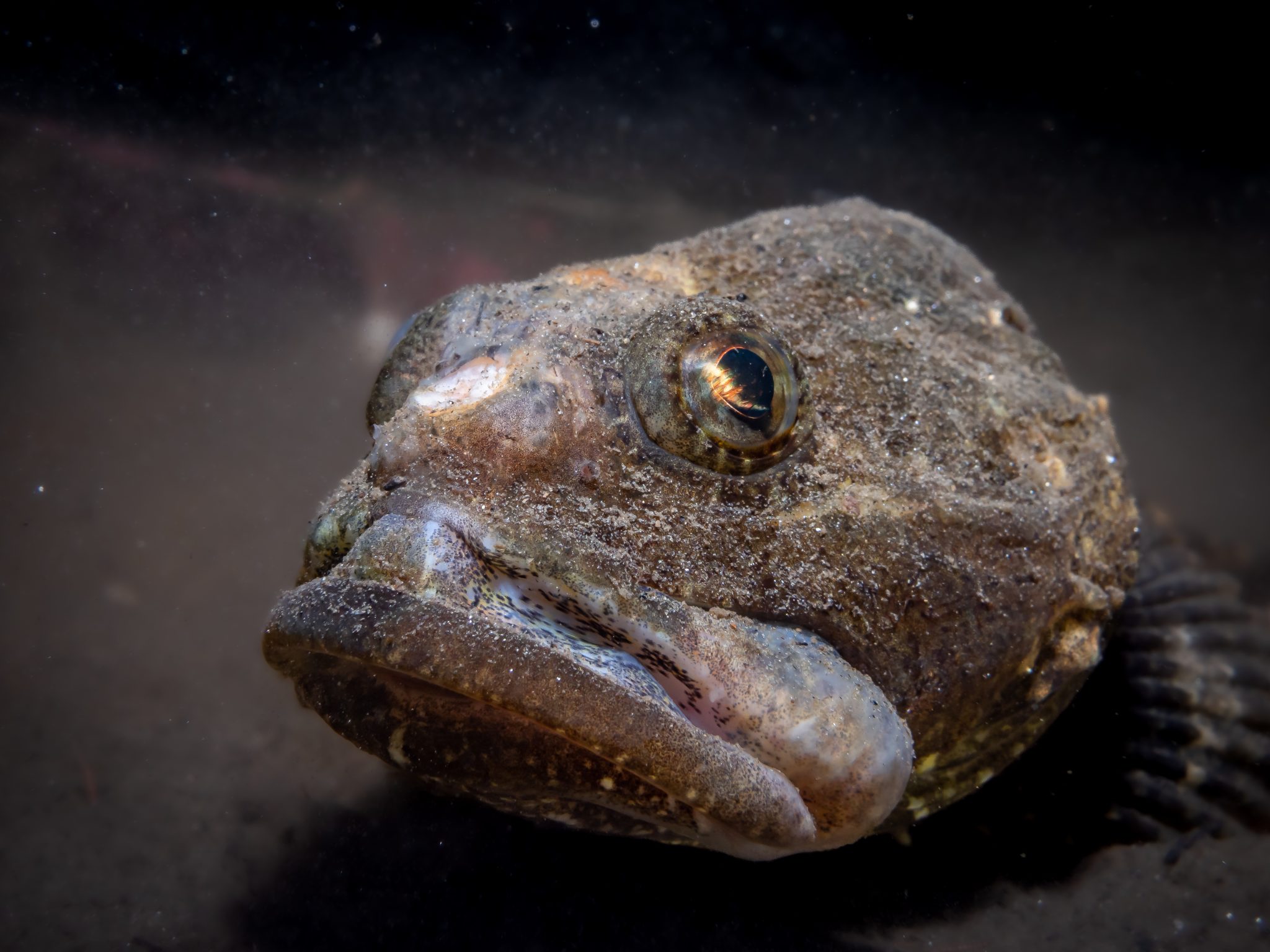Blogs
Amazing Wildlife Encounters: Farne-tastic Diving
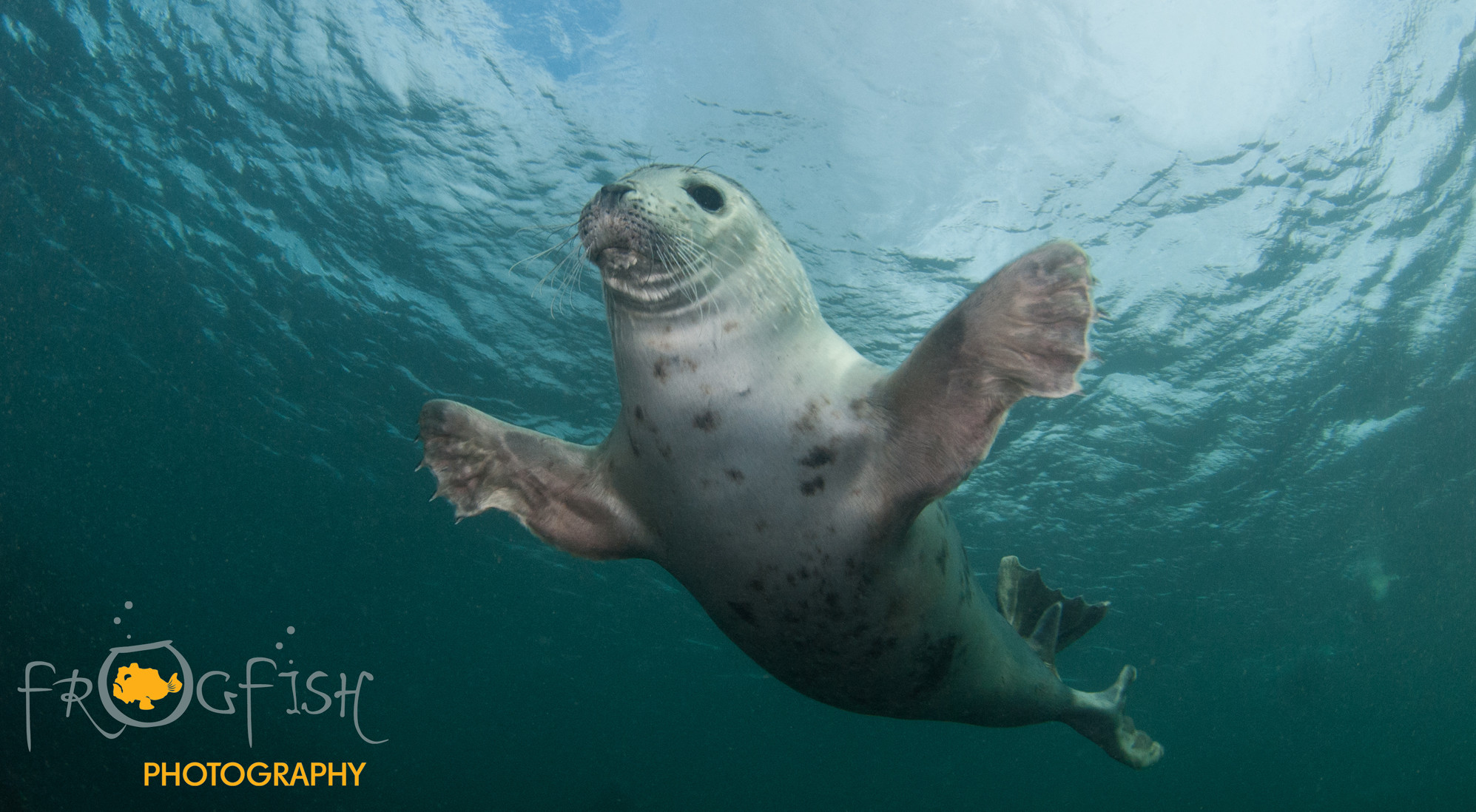
Nick and Caroline Robertson-Brown from Frogfish Photography take a group of divers and underwater photographers to the Farne Islands to dive with some very special British marine life…
The Farne Islands is a remote cluster of rocks and islets found just off the north-east coast of England, 40 miles south of Scotland. The closest town is Seahouses, and it is from this harbour (or Beadnell Bay) that you can set out on the short ride to this amazing outcrop of Northumberland. There are some 20 islands (although some of these are only visible at low tide) and they are made up of an outer and inner group of islands. They are internationally famous for their wildlife with huge numbers of birds, including puffins, selecting this as their breeding grounds during the summer months. Going ashore on most of these islands is not allowed, in an effort to protect the wildlife living there. Tourists flock to the region and take boat rides to see and photograph the wildlife, and they nearly all come to see the most charismatic of the species residing here – puffins and the seals.
We aim to dive the Farne Islands at least twice every year; once in peak summer season to try to get the best weather, and then also at the end of October to try to be there for the seal pupping season, when over 1000 seals are born each year, and you can get incredible, close-up and intimate underwater encounters with these amazing wild animals. We always take the trip with Paul Walker from Farne Island Divers, who is a great skipper, and has truly expert knowledge of these islands. He has a huge RIB that not only can get us to the dive sites before the slower hard boats arrive, but that can also be manoeuvred much closer in, to where the seals are resting and, of course, to get us to the very best sites. The ability to get right up to the rocks also means that we get to enjoy plenty of the bird life and can spend our surface intervals watching the puffins and other seabirds whilst warming up with a mug of hot soup.
The diving here, however, is not only about the seals, but also offers great marine scenery with gullies lined with hundreds of anemones, juvenile fish and crustaceans hiding amongst the kelp forests and wrecks to explore. Whilst this superb UK diving is not to be overlooked, most importantly to us, it offers our divers and budding photographers the chance to get in, photograph and interact with the local seals. To really enhance the possibility of seeing the seals up close, you need to stay in the relatively shallow water, and so this experience is a great way to get people enthusing about UK diving.
One of our favourite sites is Little Harcar, diving along a small, shallow wall, to a maximum depth of about 10m. Your initial encounter may well be with a larger seal buzzing you, flashing past far too quickly to even raise your camera to try to get off a shot. Gullies in the rock face are a good place to explore, and you will often see the seals playing overhead. Keep going and you will enter a small bay area, and this is where all the serious action happens. It seems to be a place where the seals like to relax in one of the many cracks in the rock, which may have a sleeping seal wedged in for a bit of shut-eye. The young ones are most likely to be awake and up for a bit of fun, and they will follow you for a while, occasionally grabbing your fin, until they pluck up the courage to come around and have a good look at you. This is the sort of UK dive site that can have you staying in the water for well over an hour, regardless of the cool water off the rugged yet beautiful north east coastline. As an underwater photographer, it is, sometimes, hard to know which way to point the camera, when you have 3 or more eager seals vying for your attention.
Our experienced skipper, Paul, always waits until we’re out and on the islands to select the best dive site. Bobbing in the water, close to shore to assess the currents, tides and also whether the seals look like they are in the right frame of mind and are up for a spot of playing about with divers. Just because there are large numbers of seals lying about on the island doesn’t mean they are in the mood for swimming with humans. Most of the islands will have a group of seals, hauled up on the shore for a spot of R & R, often after they have been out on a hunting expedition; but when approached by a boat, many will dive into the water and then pop up their heads to look at you inquisitively. When you have lots of seals in the water, all looking at the boat, as if to ask when you might be getting in, you sort of get the feeling that it is going to be a good dive.
On our most recent trip, the weather looked like it might ruin our final day of diving, with large waves beating up onto shore, but Paul found us an amazing and very sheltered spot, and as he manoeuvred the boat into position, what look like at least 100 seal heads popped up out of the water, pleading with those puppy dog eyes for you to come and play. Our skipper still seemed a little dubious about the dive; “It’s only 4-5m deep here and you will have to stay away from that channel only 15 m away, which has a 5 knot current ripping through it. Are you sure you want to dive here?” Came the question from our skipper. The response was inevitable. “Too right,” came the reply as all 10 of us started scrambling into our dive gear. It was one of the best days diving we have ever had in the Farne Islands. The sun was shining and we were in shallow water, with playful seals and beautiful scenery. As underwater photographers, particularly, there is not a better dive anywhere in the UK, and possibly further afield too when it is like this!

Two photographers get in close for a shot of this young seaBack on land, there is plenty to do in the area, with the imposing profile of Bamburgh castle visible on the horizon just along the coast, and you can also visit Lindisfarne when the tides are right for making the crossing along the causeway. After a day of excitement, diving in playing with his endearing creatures, most chose to sit and select from a great line-up of real ales served at The Ship Inn overlooking the harbour and the sea wall.
To find out more about Farne Island Divers, visit www.farneislanddivers.co.uk.
To find out more about Frogfish Photography and the courses and trips they offer, visit www.frogfishphotography.com.
Blogs
Diving in Loch Leven
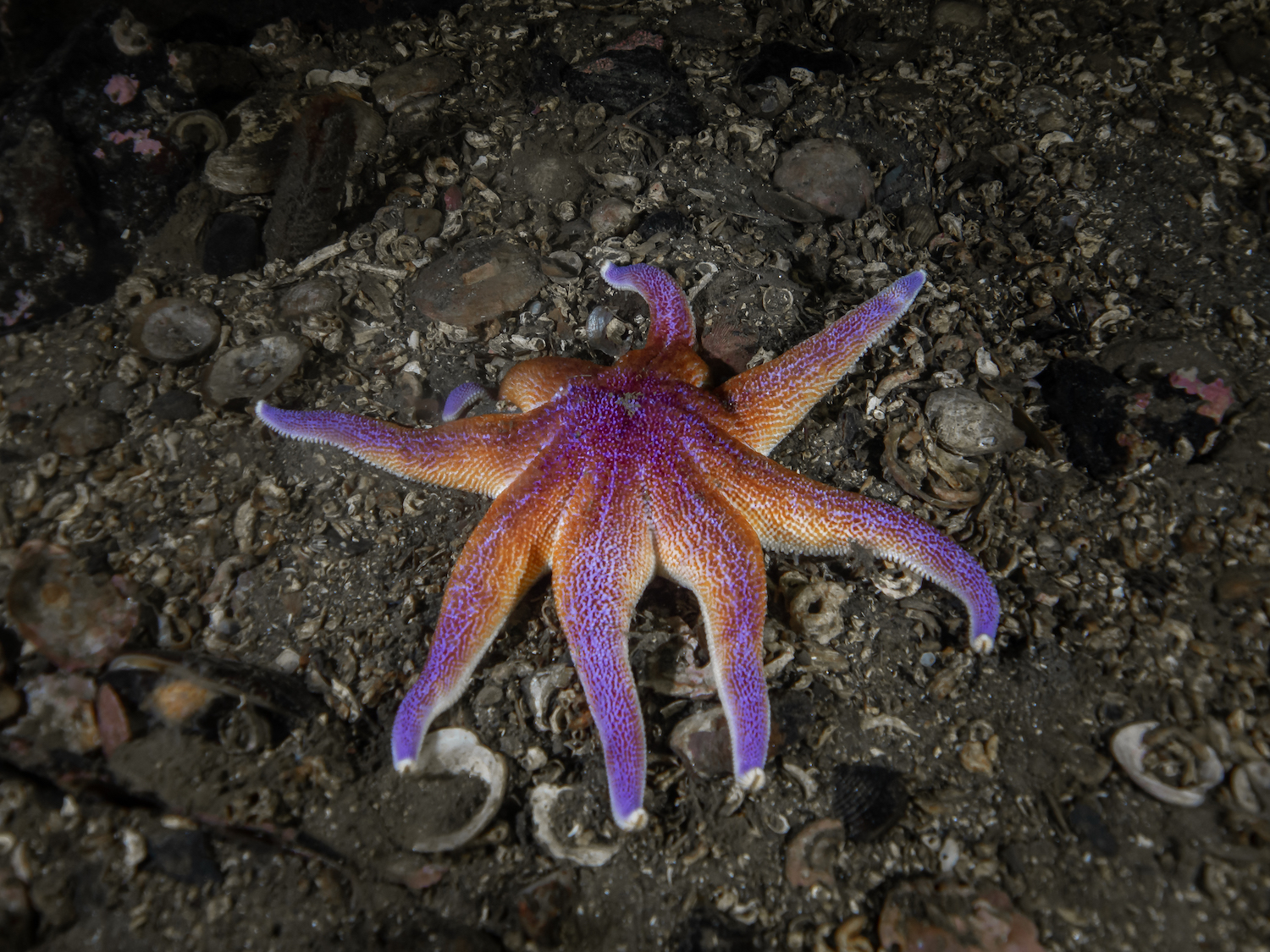
I don’t think I’ve driven a road that encapsulates Scotland’s beauty and diverse landscape more than the A82 from Glasgow to Inverness. This incredible road runs along the side of the picture-perfect Loch Lomond, across the rugged landscape of Rannoch Moor, cuts through the breathtaking Glencoe, opening out onto the sights of Loch Leven before continuing to Fort William, up the banks of the mysterious and magical Loch Ness before finally reaching Inverness. It’s a road that’s travelled by thousands of tourists every year and all along it you’ll see cars pulled up and people with cameras and phones out looking for that insta-perfect photo.
But, what so few people realise is, as well as showing off Scotland’s landscape, the A82 also has some stunning diving just off it as well! Ok, this is where things get a little confusing, so let me clear this up just now. Scotland has two Loch Leven’s; one is in Kinross and is landlocked whereas the other is about “halfway” up the A82 at Ballachulish and is a sea loch, and it’s this one I’ll be talking about.
Along the banks of Loch Leven there are several dive sites which show off the incredible beauty of Scotland’s underwater world and are more than a match for the rugged magical “surface” landscapes that surround the loch. Now I’ve personally only dived three of the sites, and sadly one is inaccessible anymore due to development work, but the other two sites, along with the one called Manse Point I haven’t personally dived (though am reliably informed), still make the trip well worth it.
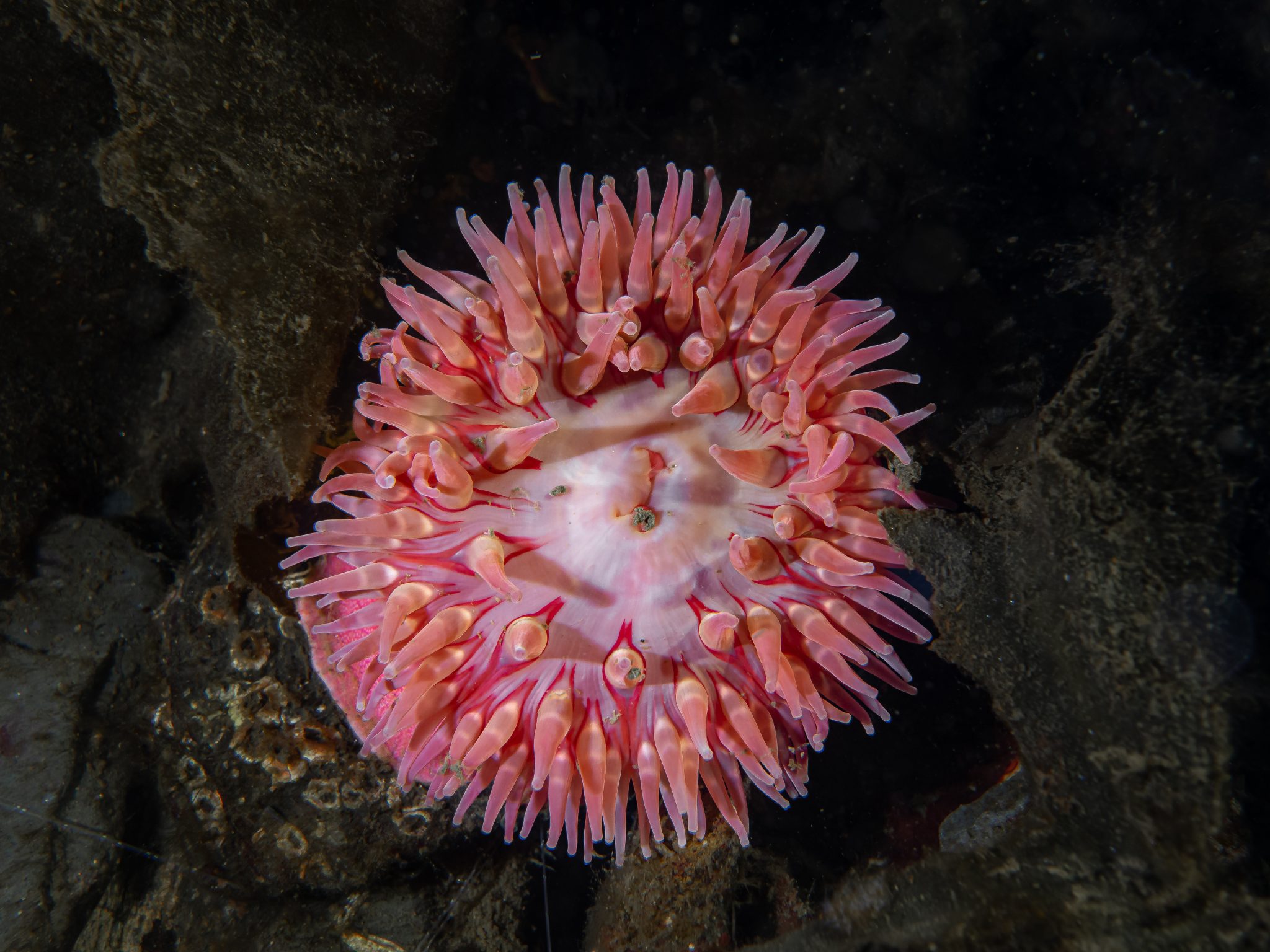
Carnoch Bay is, as the name suggests, a bay which literally offers something for everyone; from trainees taking their first breaths to those experienced divers looking for a bit of depth. With a maximum depth within the bay of only around 11m (a good bit of it is less) it offers instructors and trainees a “safe” environment to carry out skills as well as an excellent dive without needing to go to deep. It’s a sandy bottom so you just need to be careful of kicking up the vis.
For those looking for a bit more depth, finning out of the bay, or even entering at the top of the bay (a bit of a walk with kit), the seabed drops to +30m. And, on top of that, with a big carpark next to the entry point and the hotel literally a 2mins walk away it makes for an excellent site for a club weekend or day out.
Personally, I’ve always headed out from the bay. Entering from the stoney beach you drop down to around 7 or 8m and to be honest, from here the dive is relatively simple. Keep the wall on your right-hand side and swim out as far as you like and, on the way back, keep it on your left. If you’re looking for depth the directions don’t change, keep swimming with the wall on your right and eventually it starts to drop.
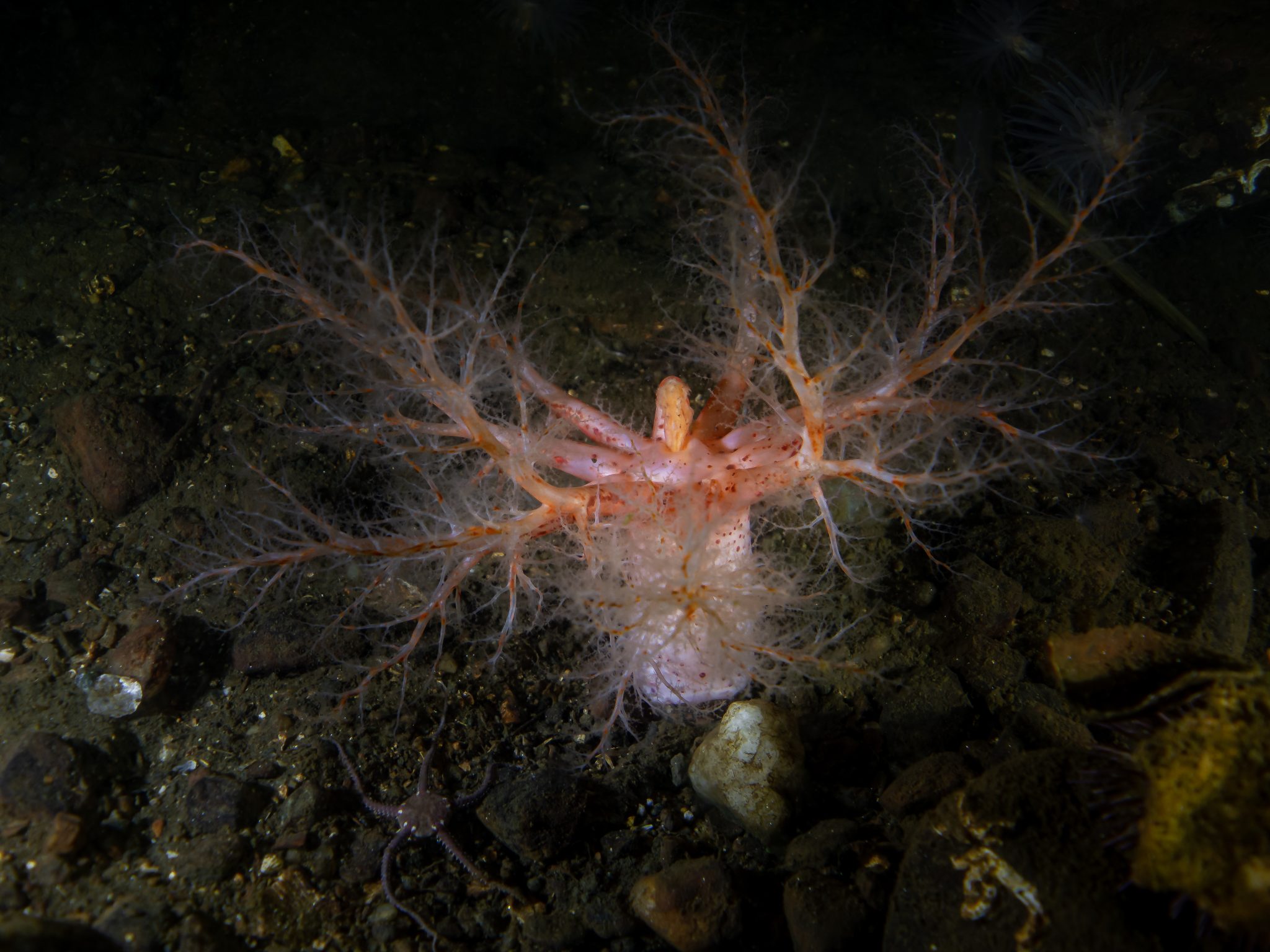
The wall is awash with life in the cracks and on the boulders; from starfish to sea cucumbers, but it’s when you come off it slightly this site really throws up some spectacular sights. The sandy bottom is littered with phosphorescent and slender sea pens which are magical. Don’t go to quickly across the seabed, take your time and look closely as often there’s the odd sea scorpion hiding away as well as gurnards and if you’re really luck an octopus tucked away under a rock.
Sadly, I didn’t manage to get a shot of the octopus, but apparently, I did give it a fright which led to some rather “arty” shots of its ink. I suppose it’s the next best thing, right? Another very special unexpected sighting we had last time, which funnily enough I also didn’t get a photo of was a seal! As we made our way to the end of the bay my torch picked out, what I thought was a bit of an odd-looking rock… I guess it was odd looking as it wasn’t a rock at all but the seal! In my excitement I might have forgotten I had a camera and missed the shot again! On a bright sunny day (we do get them occasionally in Scotland) the shallowness of the bay means that the light streaming in from above makes for a truly incredible dive, and no need for a torch.
When you can combine a breathtaking journey through some of the most incredible scenery with a dive that’s equally as beautiful, well what more could you ask for?
For more from Ross, follow him on Instagram @underwater.ross and on Twitter @outdoorsross.
Blogs
Diving Loch Long
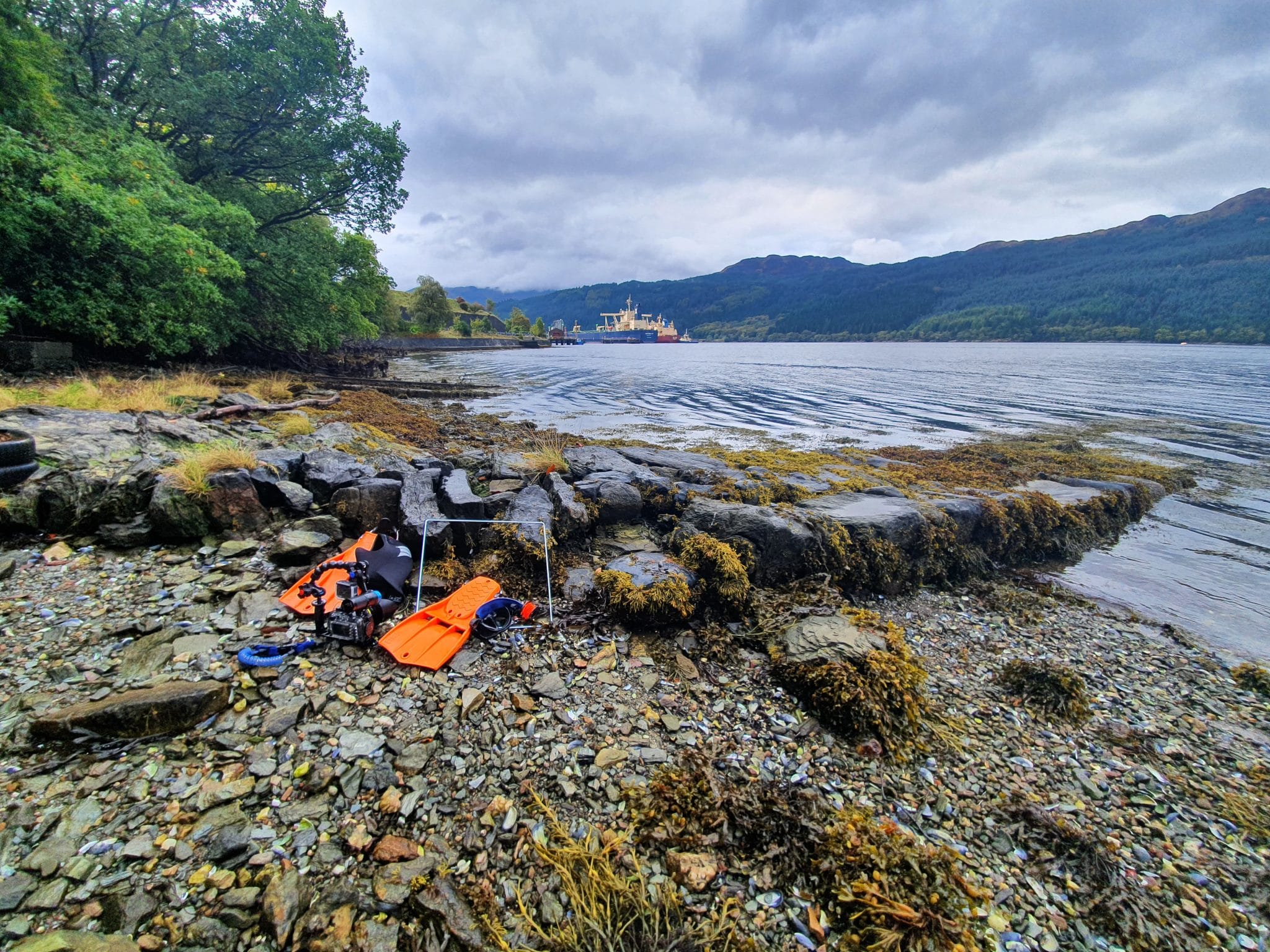
I’m not sure why, maybe it’s just me, but I think sometimes we overlook what we have right on our doorsteps. For some of us we can become indifferent, and in some cases outright loathsome, to things we see and experience regularly, not always fully appreciating what we have close by. When it comes to diving on the west coast of Scotland I think is particularly relevant in regards to Loch Long.
If you’re a diver from Scotland (who dives here obviously) it’s pretty much guaranteed you’ll have dived in Loch Long, whether it be for training/courses or “fun” dives. In fact, I think it’s safe to say if you’re a regular diver here, you’re probably a little fed up of diving in Loch Long. But when I sit down and really think about it, I begin to wonder if we actually take the loch for granted and don’t appreciate it as much as we should!
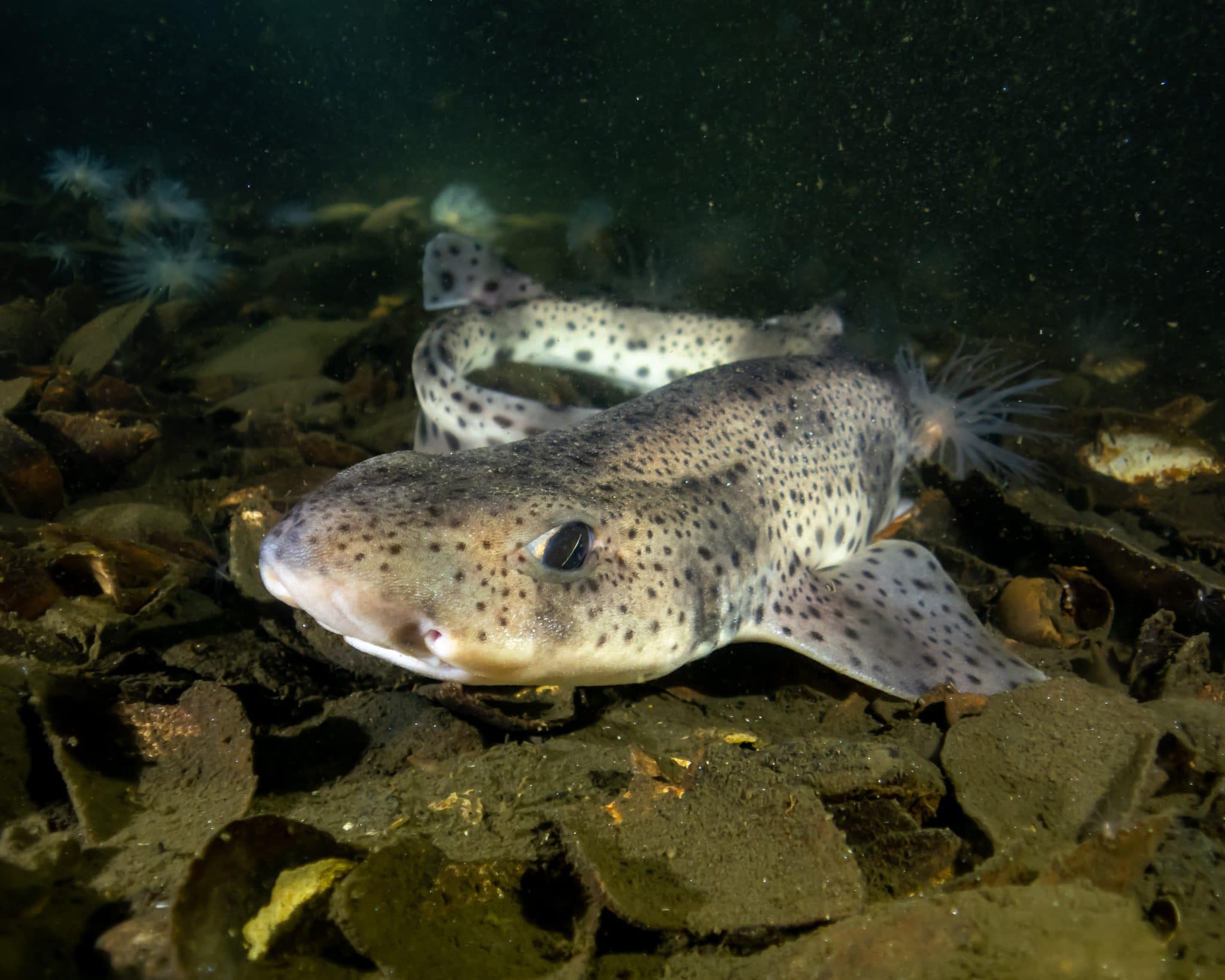
Although at 20 miles long Loch Long doesn’t get its name from its length, actually Loch Long in Gaelic translates to Ship Lake and the name dates back to 1263 when the Vikings saw Arrochar, at the top of the loch, as a key target from which they could drag their ships across land to attack the unprotected settlements of Tarbet.
Anyway… brief history lesson over, back to diving. If you do a quick check of Finstrokes you’ll see that there is no less than THIRTEEN dive sites in Loch Long, that’s a staggering number in one body of water and all within an hour’s drive from Glasgow City Centre. I’ll be honest, until I started researching this piece I didn’t actually realise there were so many, I’ll hold my hands up, I’m no expert by any stretch of the imagination and I’ve certainly not dived all thirteen.
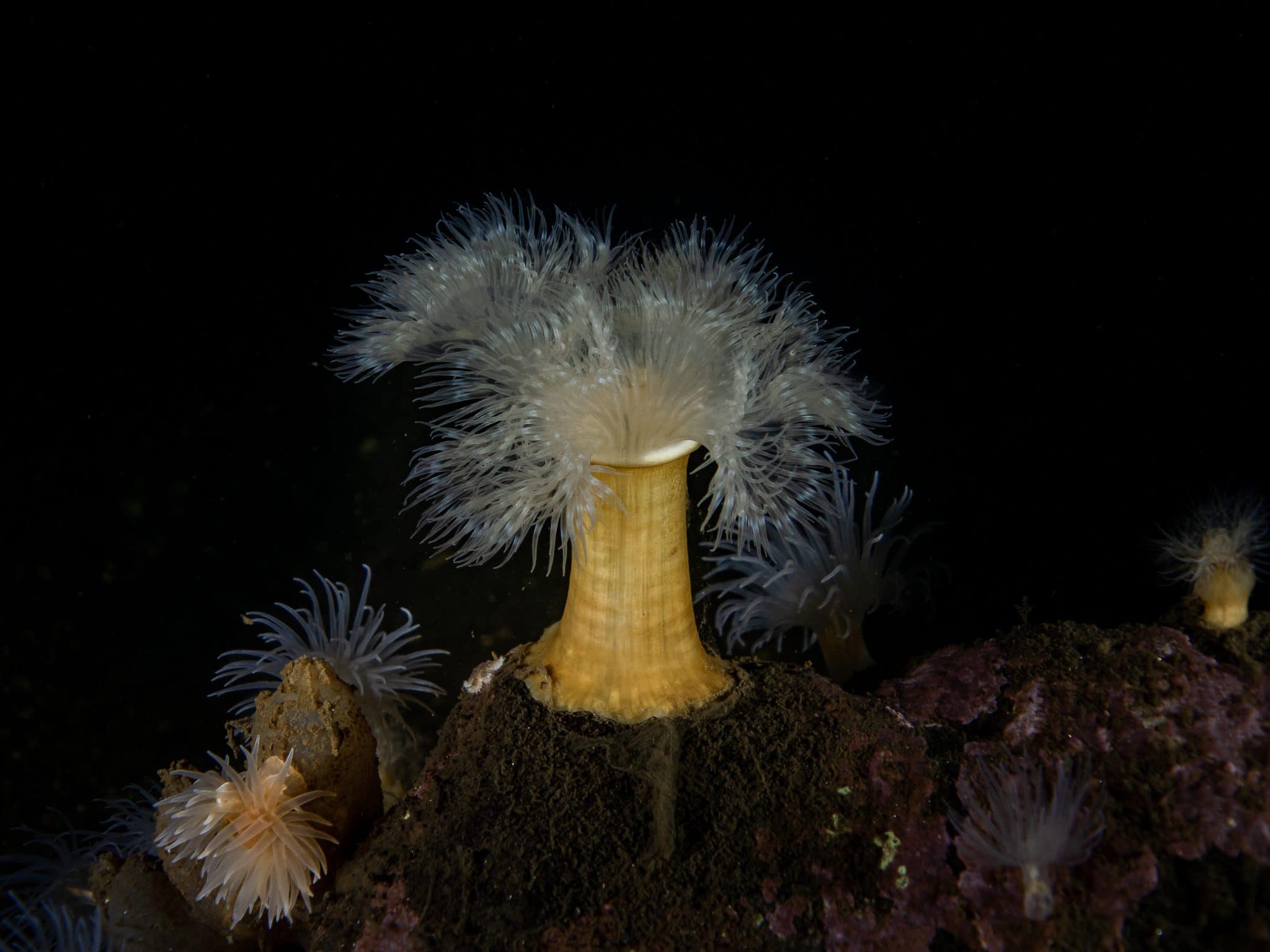
Of the sites, in my opinion, there are definitely four that stand out as and are definitely worth a visit if you are up this way.
As with sites around the country, every club/organisation/dive school seem to have their own names for each one, but I’ll try and give as many names as possible for each site.
Finnart/A-Frames
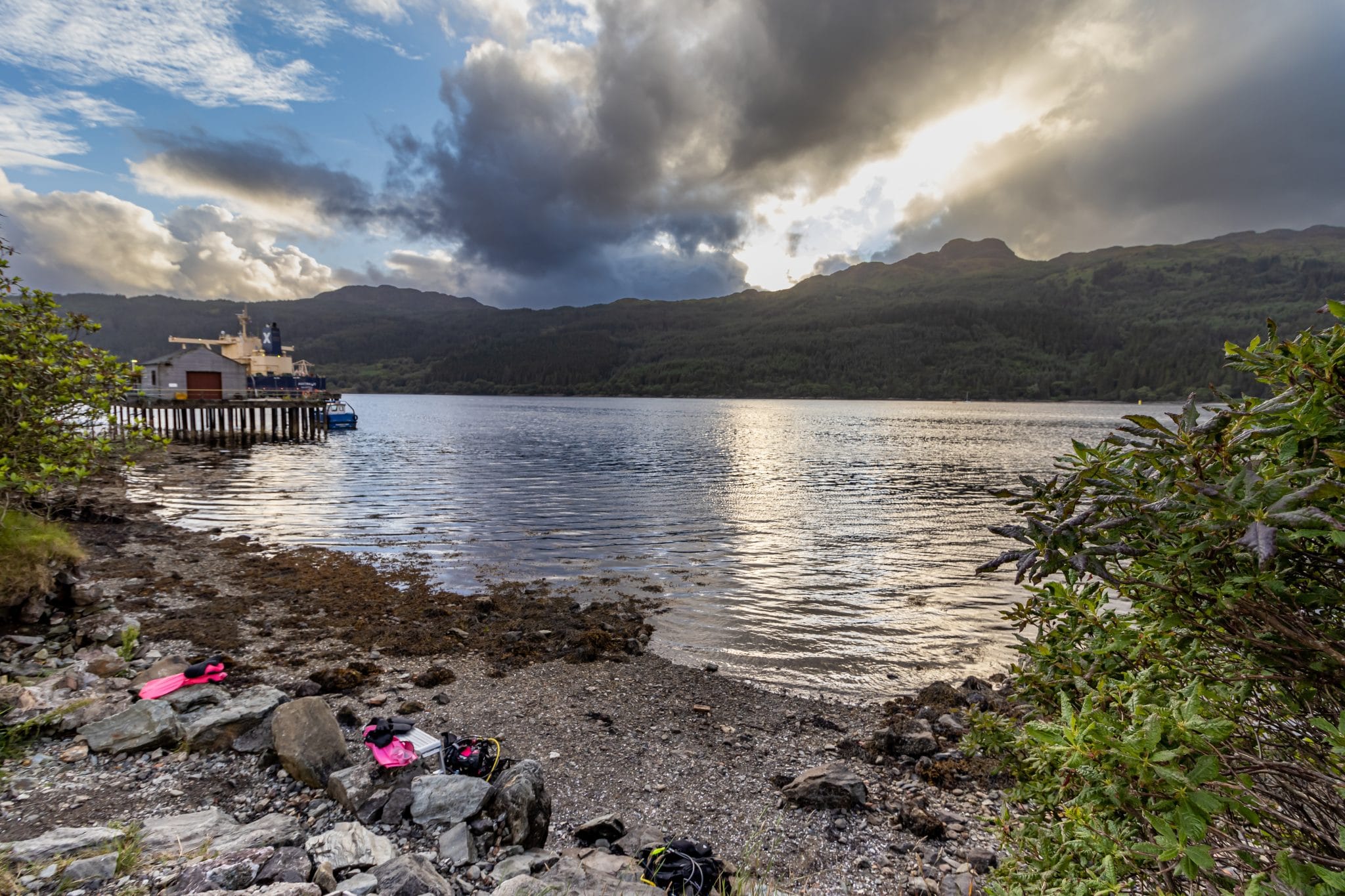
Finnart (sometimes referred to as A-Frames) is probably the most popular site in Loch Long, probably the most popular site in Scotland, and if not the number one, it’s definitely up there. Finnart was built by the Americans during the Second World War to offer a deep water oil terminal within the defensive ring of the Clyde.
Chances are if you’ve taken part in any training or courses here you’ll have at least done one dive at the ever popular A-Frames, but it’s not just for trainees. At A-Frames you’re met with an excellent carpark (which gets VERY busy in the summer weekends) and an entry that’s pretty good by many respects, though the small scramble down to the beach does require a little bit of care.
Once you dive beneath the surface you’re met with an extremely diverse site that has enough to satisfy the newest recruits taking their first breaths underwater, right the way up to the most hard-core experienced divers. With wreckage from the old pier to be found around 8 to 12m there is a huge amount of life clinging to it giving first time divers a superb introduction to the site. If depth isn’t really your thing, then you could spend a full dive in and around this debris field zig-zagging the slope and exploring all the nooks and crannies that are home to squat lobsters, edible crabs, velvet swimming crabs, the list goes on.
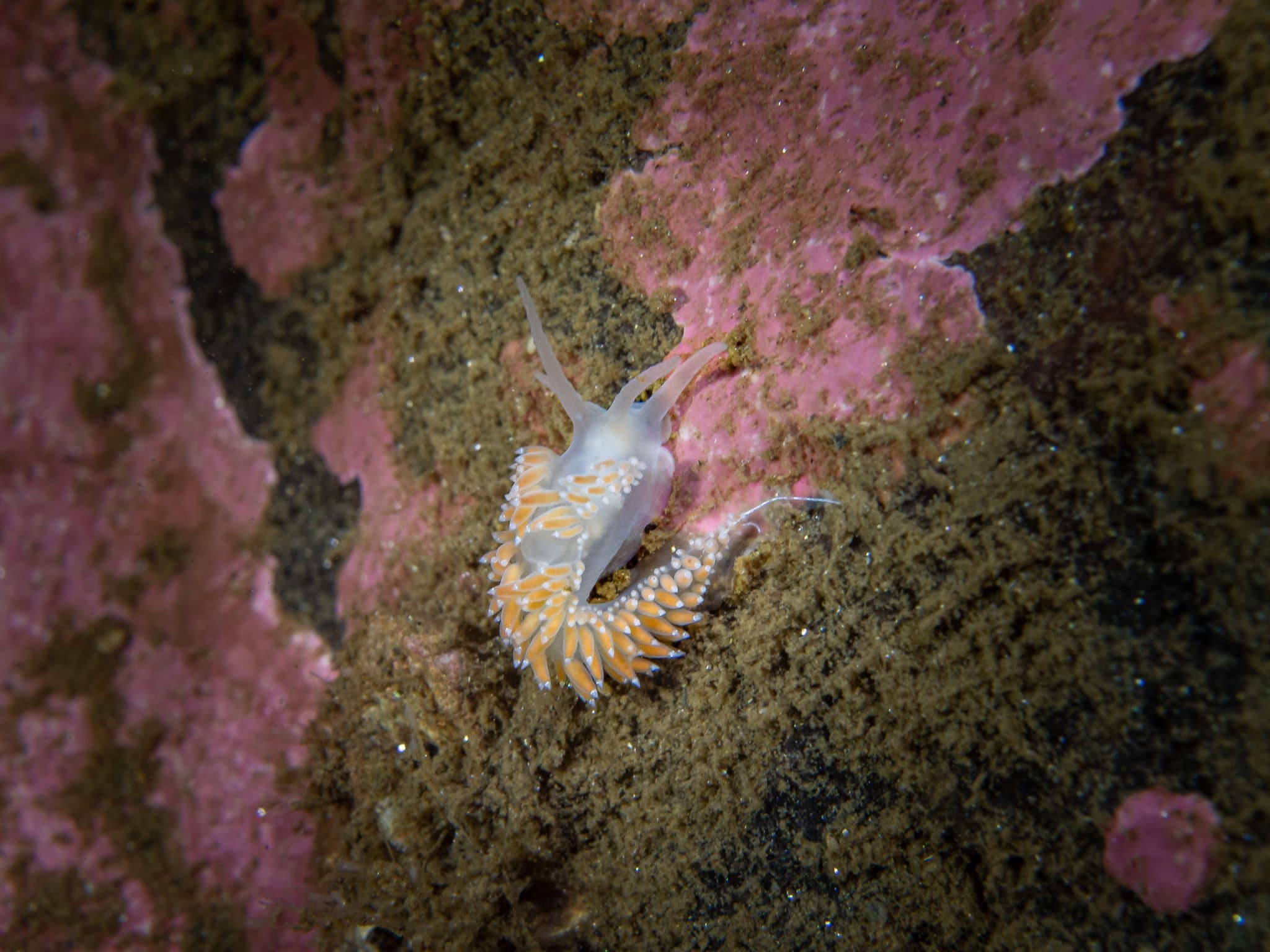
Diving a little deeper (below 20m) though you come across the great A-Frames, remnants of the old pier that lend their name to the site. Out of the gloom these huge structures very often suddenly appear (may have swam into them on one or two occasions… ) and you are welcomed by a vibrant cacophony of life. The frames are covered in anemones, star fish, deadmens fingers and if you’re really lucky the odd nudibranch! A dive around them never fails to disappoint and if you get a day with particularly good visibility the view from the seabed up to the top of them is truly spectacular.
If you are particularly keen to log some deeper dives, there is the option to head out further into the loch from the shore here and it’s easy enough to get +40m and its been known to see some pretty spectacular fireworks anemones at these depths.
29 Steps
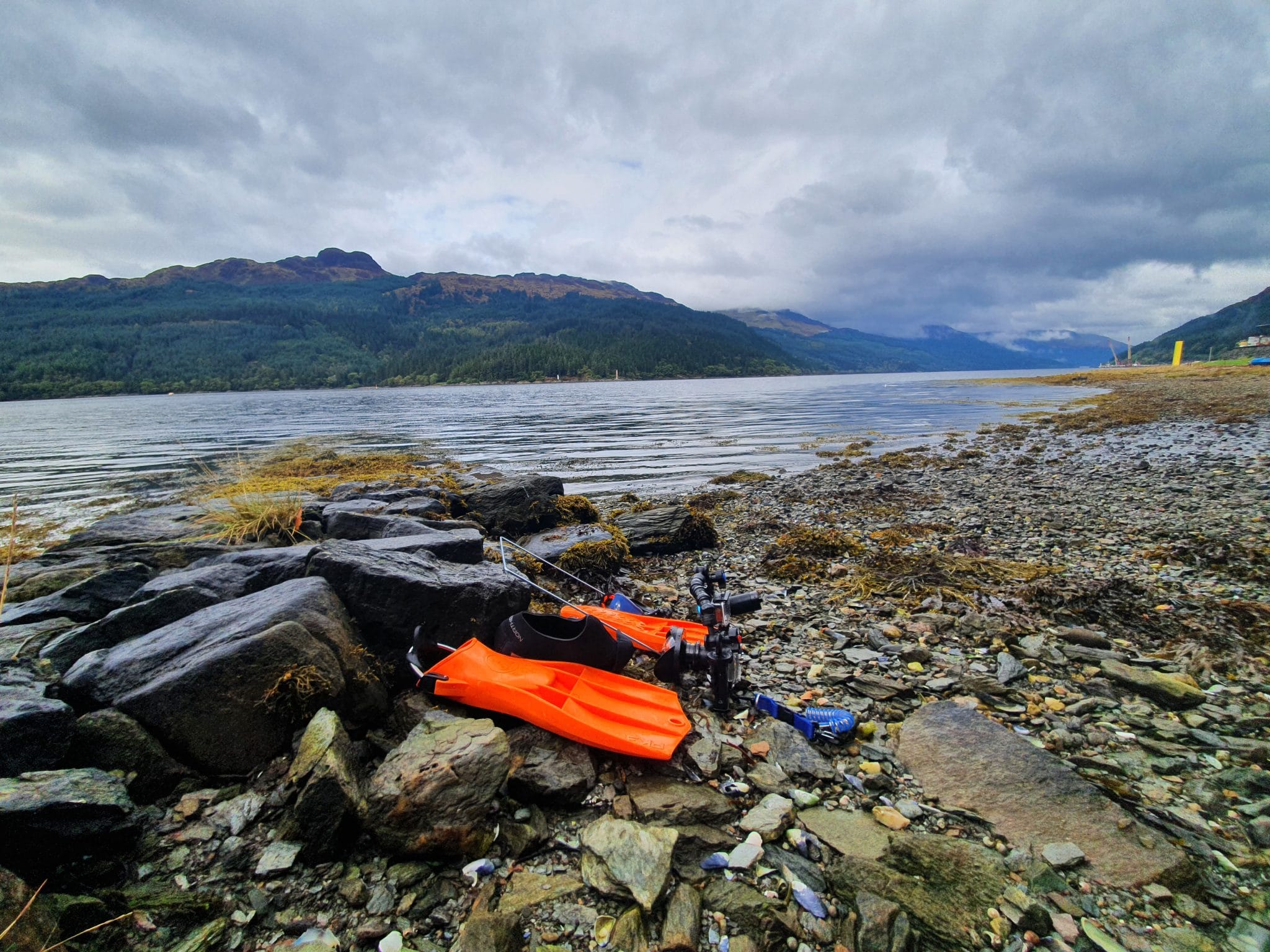
Just north of Finnart is the next dive site on our tour of Loch Long, in fact when I say just north, actually you can swim to it from Finnart… I may have got lost once and ended up at here, but that’s another story. Seen by regulars as more of a training site, and albeit maybe not quite as exciting as A-Frames, 29 Steps does offer a nice dive with a very easy entry and exit and pretty simple navigation.
Getting the name from the 29 steps (in fact there’s actually now only 26) that lead down to the beach from the road, the main hazard here is the steps themselves that can be quite slippy when wet, but apart from that once you reach the bottom you are met with a rather nice wee beach with the remnants of an old jetty stretching out into the water. The old jetty wall offers a convenient perch for dive gear and there is even a wee sheltered archway that can be used to escape the rain on a dreich Scottish dive day.

The main dive here is straight out from the beach down a gently slope to platform at around 9m which offers an excellent base for doing training and skills. Although not as much life on the platform (well it is regularly used for training), velvet and edible crabs can be found in and around it with a few other bits and pieces as well. From the Platform there is two options.
Option one is to follow the slope downwards as far as you like, where again, you will find the usual life of crabs, squat lobsters, starfish and even the odd fireworks anemone and langoustine at depth and then turning left to zig zag back up.
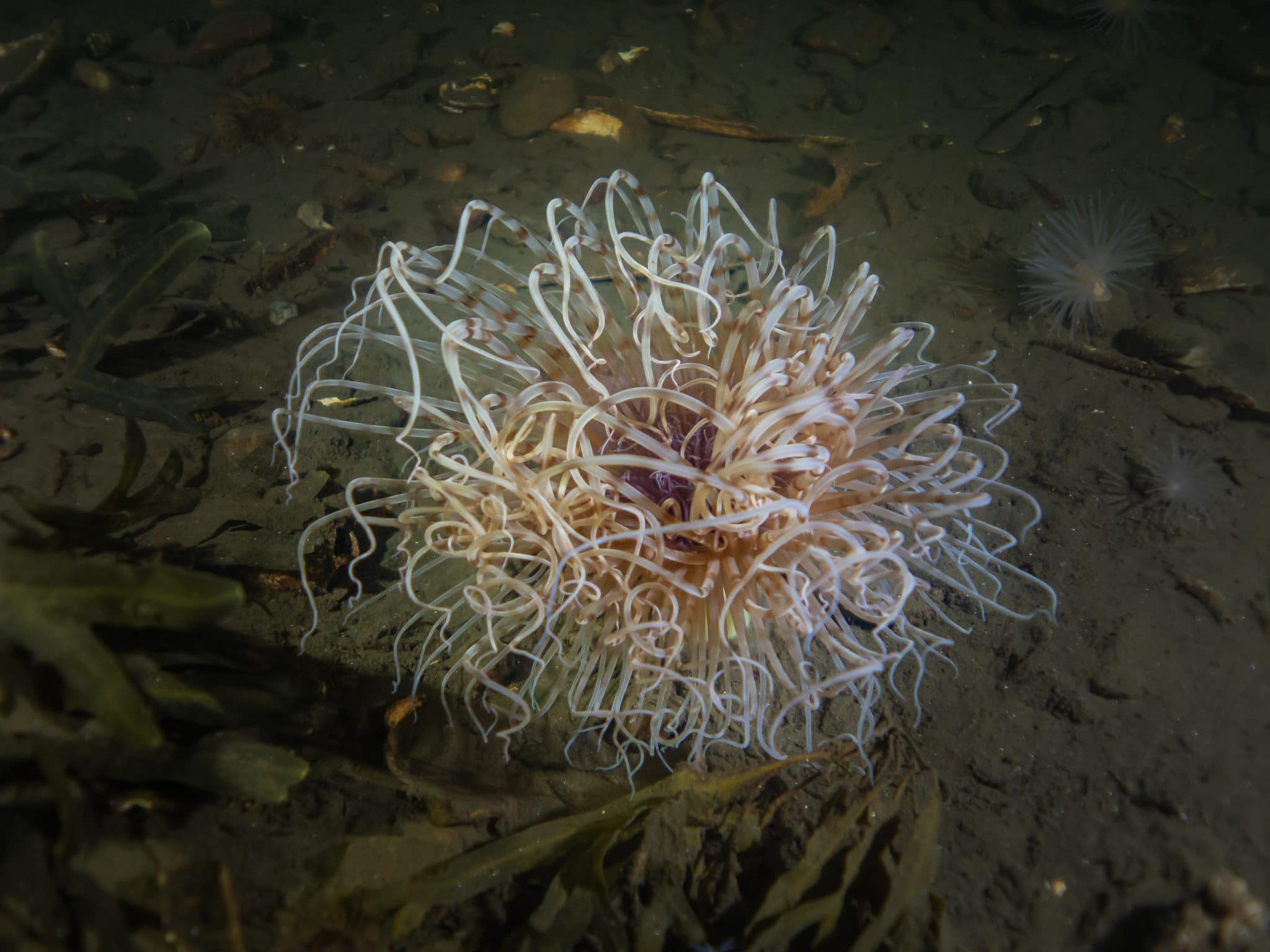
Option two, which can also be done along with option one is to continue down a little deeper from the platform and then bear left perpendicular to the slope. Finning along you will eventually come to the “wreck” of an old rowing boat which offers a nice habitat for the usual critters and even, if you’re really lucky, the odd flatfish in amongst the debris. On the way back to the entry/exit point, there is also an “artificial” reef of some old discarded dive tanks in the sand that also allows for a wee bit on investigation.
Maybe not quite as exciting a dive site as its near neighbour Finnart, 29 Steps is sometimes undervalued and does offer a nice alternative if you come to find A-Frames “mobbed” when you arrive, as it often can be at weekends.
Twin Piers
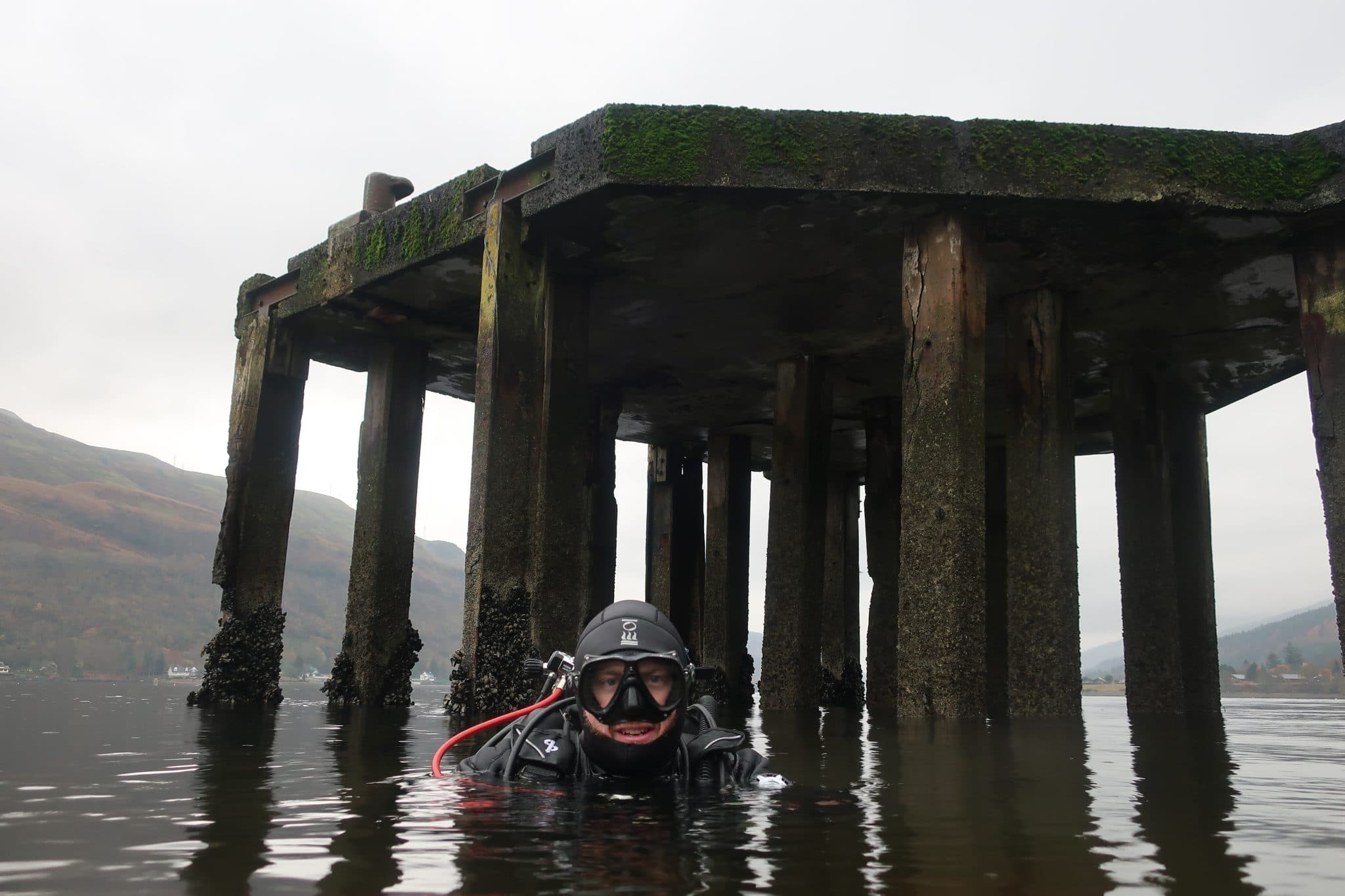
Heading to the top of the loch and round onto the west side you eventually come to the dive site Twin Piers. Once you arrive it’s pretty obvious where the name comes from. Sitting just off the beach is the remains of, funnily enough, two piers. Lying in the shadow of one of Scotland’s most popular hill walks the Cobbler, both Twin Piers (and Conger Alley) can very often offer sights just as spectacular beneath the waves as you can expect from the mountain that towers over it.
Parking for Twin Piers can be a little bit tricky if you happen to turn up on a particularly busy day. This requires driving ever so slightly past actual entry point and onto the grass verge on the side. This also leads to one of the main hazards of Twin Piers the extremely busy, and fast, road it sits on. There is an excellent path which leads back to the entry, but I would still strongly advise care be taken when walking to the site with heavy gear as both lorries and coaches often travel at speed along the road. The beach itself actually sits on a lower level to the road/parking area and so the second main hazard of the site is found. A ladder has been place and secured from the original “entrance” of the pier and a handle has also been drilled into the wall to help with the climb down. In all honest it is not a major issue, but is still worth mentioning.
Ok, so onto the diving! Twin Piers is an excellent site for divers of all abilities and navigation is pretty straight forward. From the beach head straight out between the two piers and drop down. On the slope you’ll be met with a carpet of discarded bivalve shells which is pretty impressive in its own right. Continue down the slope to anywhere between 10 to 15m or so and then bear left perpendicular to the slope. If you are lucky you will eventually hit the chassis and axels of an old truck which fell off the pier.
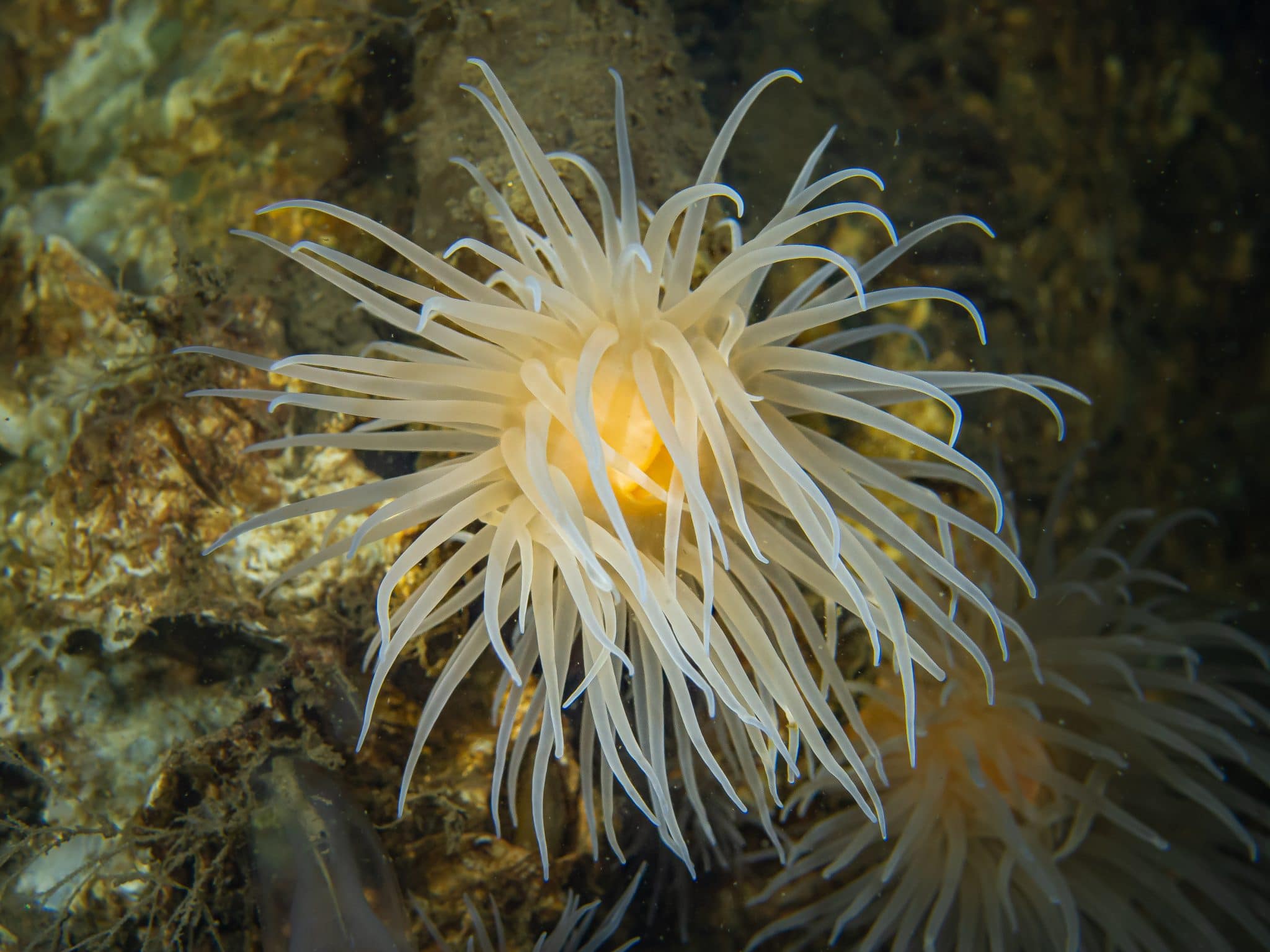
From here I’d suggest heading down to between 15 and 20m and continue to swim perpendicular to the slope until you eventually reach a rather excellent rocky reef. The boulders here are huge and offer a fantastic habitat to a whole array of life from the usual crabs, squat lobsters, anemone, starfish, deadmens fingers, etc. But the real attraction of Twin Piers is the possibility of seeing conger eels and even the odd lobster. These make their homes in the larger cracks in, around and under the huge boulders. Zig Zag up the reef and then once you’ve reached the time for a return simply retrace your steps… or should that be finstrokes? Depending on the tide state, if you come up to around 6m and swim back along you can’t fail to hit the legs of the piers, which offer a rather nice final exploration of the site during your safety stop.
On a nice day (both above and below the water), with the sun breaking through the water around the piers themselves are absolutely spectacular. The legs are awash with vibrant colourful life ranging from starfish to anemones and even the odd nudibranch if you’re lucky!
Conger Alley
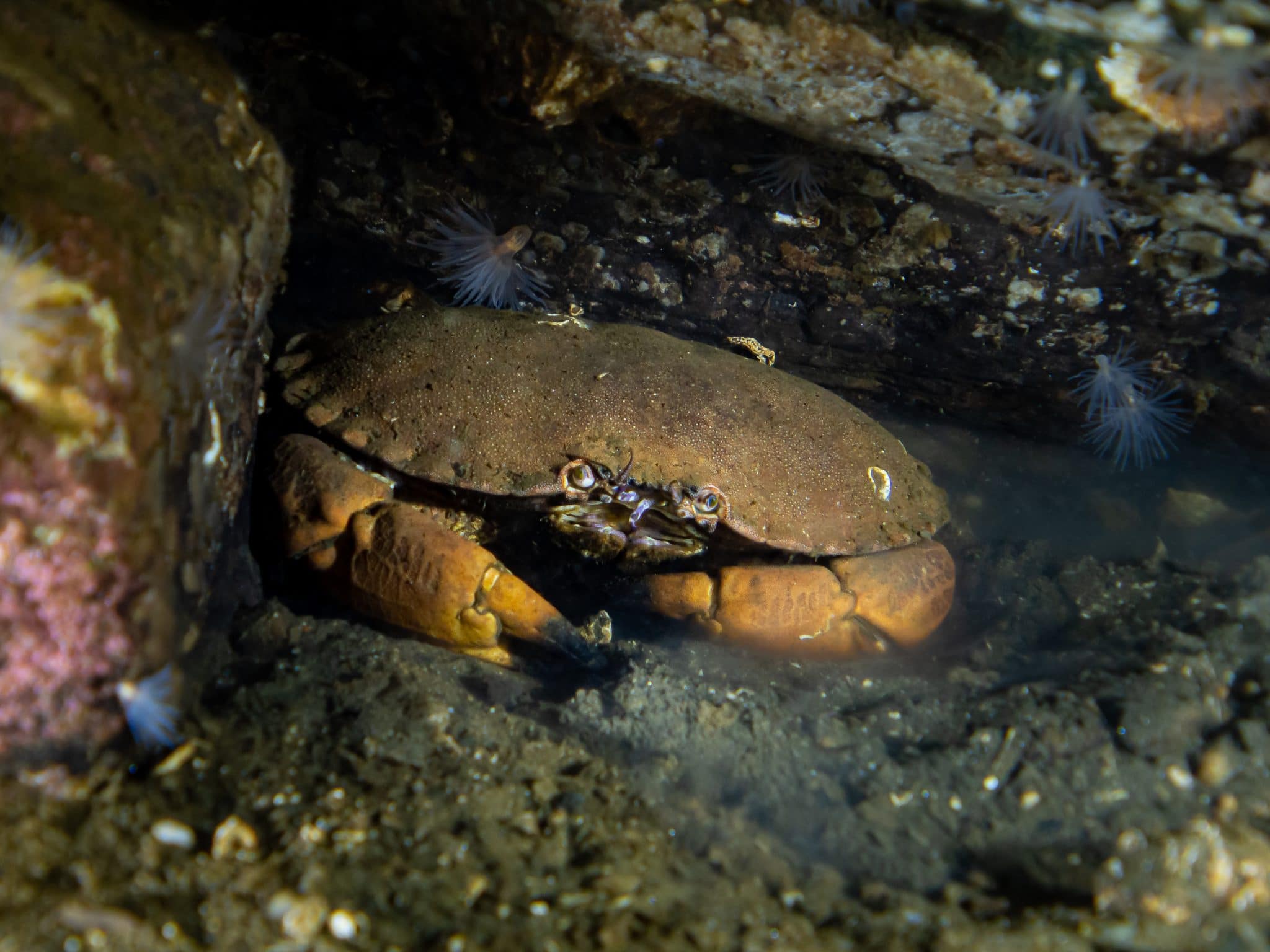
Wonder what we might find here? Heading just a couple of minutes south down the road from Twin Piers along the west side of Loch Long you eventually come to my favourite dive site in the loch. Now blink here and you could very well miss the entry and although I did mention the road as a hazard at Twin Piers, on the grand scheme of things it wasn’t a huge concern, however here at Conger Alley you do need to really be careful.
Parking for the dive site is actually on the opposite side of the road to the loch in what can only be loosely described as a small muddy layby. Now at this particular spot there is only really enough room for three cars at a push, but on the way to the site you’ll have passed a bigger, “proper” layby that can be used instead, however parking here will involve a wee bit of a longer walk back to the site, but it is worth it! Crossing the busy road does require care though so I would strongly suggest carrying your kit down to the beach and getting kitted up here as opposed to at the car and then crossing the road with hood, etc on. Thankfully the beach itself offers some rather strategically place rocks that can be used to prop gear on and even a very handy seawall that helps “step into” a twinset.
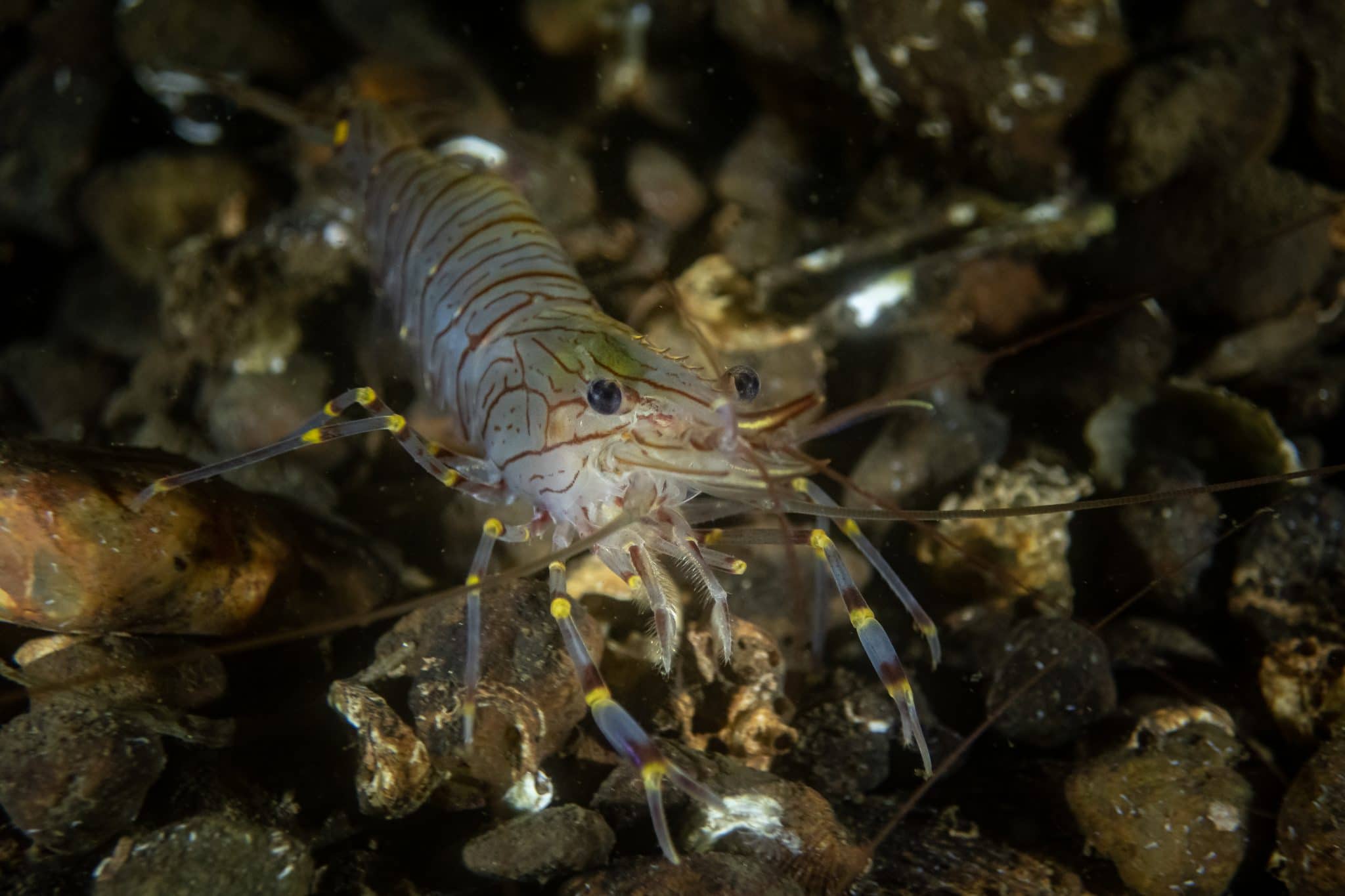
Again like all the sites I’ve discussed the entry is really easy here. Simply walk into the water, drop down and follow the slope to I would suggest, about 12 to 15m and swim left for around 4mins. You eventually come to the edge of a rather large rocky reef and from here it is totally up to yourself how deep you want to go. If your certification allows it I would recommend dropping down the reef to around 26 to 30m and then slowly zig zagging your way back up it taking your time to look in all the cracks and crevices.
I genuinely don’t think I’ve ever had a bad dive at Conger Alley and the life on the reef is unbelievable! There’s obviously the usual crabs, starfish, anemones, etc, but as the name might suggest there is a really good number of congers, and lobsters, to be found in the larger holes. Take your time to search each as they can be a little shy, but they are there. It’s also not uncommon to find the odd octopus lurking around on the rocks, so look carefully.
There’s also an abundance of fish as well from flatfish to sometimes rather colourful wrasse. Again, like at Twin Piers, gradually come up the reef and then once you’ve reached the end head back along the slope in the opposite direction to you came and you’ll eventually reach the exit.
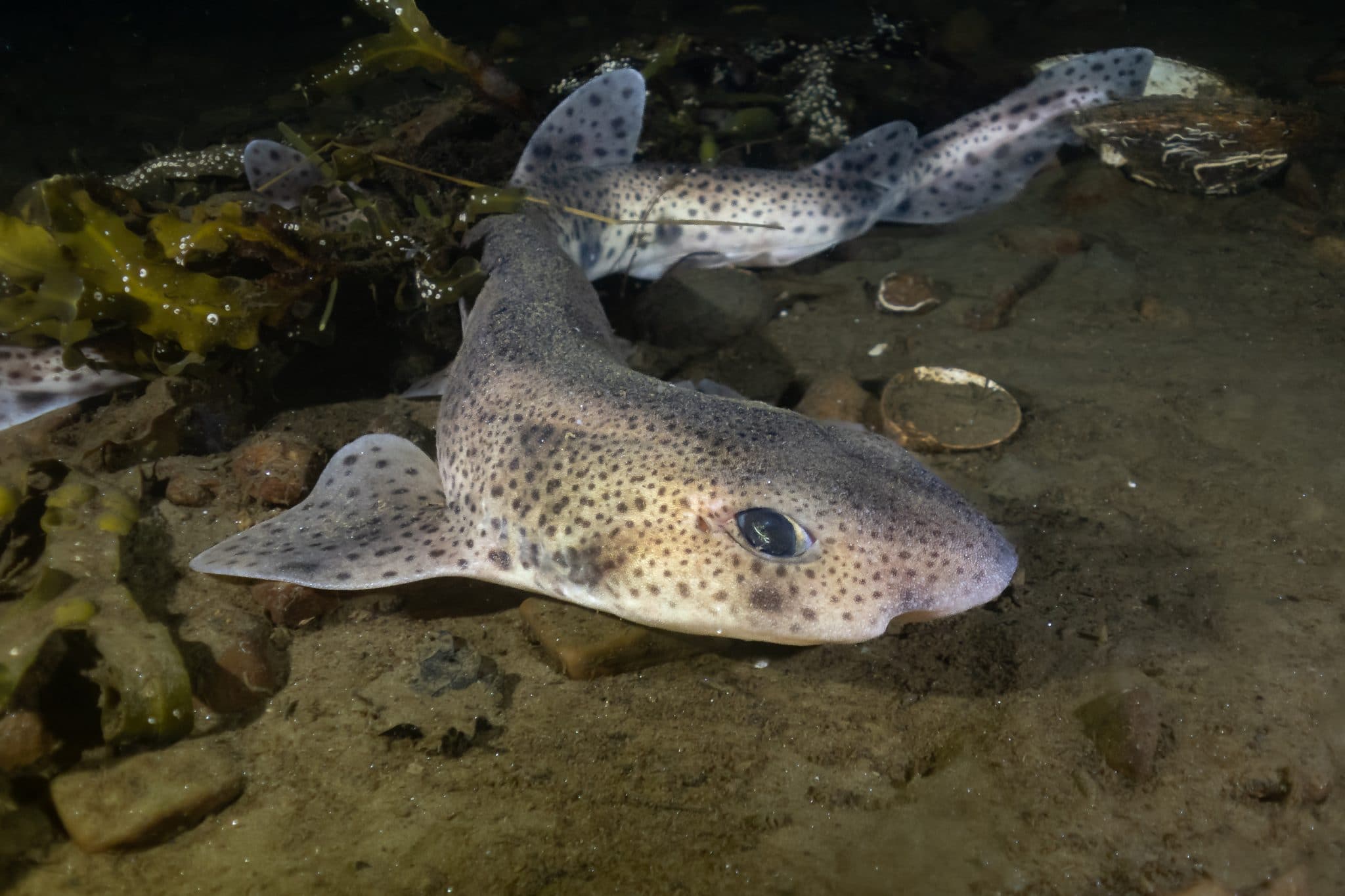
Obviously these four sites are probably the most popular and accessible to the vast majority of divers, but they really only offer a small taste of what this 20 mile loch has to offer. From the shore there is up to approximately nine dives to choose from on Finstrokes and if you have access to a boat, or are able to book onto a charter such as Wreckspeditions based in Dunoon, there is the potential for even more sites to be discovered.
With such close proximity to Glasgow and situated just next to Loch Lomond, and all the amenities it has to offer, there is also the possibility of overnight stays in campsites and lodges in the surrounding area for those coming from further afield. Loch Long offers divers an abundance of choice within easy reach that can sometimes can be overlooked and underappreciated.
For more from Ross, follow him on Instagram @underwater.ross and on Twitter @outdoorsross.








